Realizing Children’s Rights in the Republic of Congo
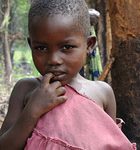
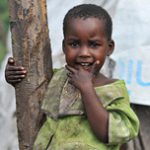
The Republic of Congo (Congo) can be a challenging place for children to live. Although the legal framework on child rights consists of robust tools, these are too often not translated into practice. In particular, discrimination of indigenous people, child labour and child marriage can limit the fulfilment of child rights in Congo.

Children’s Rights Index: 6,24 / 10
Red level : Difficult situation
Population: 5,2 million
Pop. ages 0-14: 46.17 %
Life expectancy: 63.95 years
Under-5 mortality rate: 50 ‰
The Republic of Congo at a Glance
The Republic of Congo (Congo) – not to be confused with the Democratic Republic of Congo – is sparsely populated, with over half its population concentrated in the two largest cities, and almost half its population under the age of 18 (World Bank, 2019). Child rights in Congo (also known as Congo-Brazzaville) are improving, with good access to education and many legal mechanisms in place to protect child rights. There remain, however, significant concerns as children who labour, girls and indigenous children continue to experience serious rights violations and often have difficulty in meeting their basic needs.
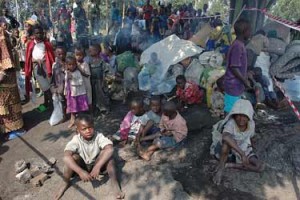
The recent conflict between the Congolese state and the Ninjas (a local militia), alongside “no humanitarian access” to the country and significant impacts of the man-made climate crisis such as severe flooding, have all combined to create a very challenging context for Congolese people; with children particularly affected (New Humanitarian, 2018). Although the proportion of the population living in poverty fell over the past decade, the extreme poverty rate increased from 2016, especially in rural areas, as a result of the decline in oil prices (World Bank, 2019).
Historically, Congo was subjected to French colonialism for 80 years and Brazzaville was the capital of ‘French Equatorial Africa’. Almost a century of brutal European colonialism severely impacted the country, with innumerous horrors exacted upon its population and its resources stripped for French profit in the form of railway construction and rubber tapping, despite much local resistance. Many of the difficulties Congo and its people face today are connected with the massive crimes inflicted during the colonial period.
Indeed, Congo has experienced numerous conflicts since its 1960 independence from which it is still recovering, including a 1997-1999 civil war which led to over 25,000 deaths and 250,000 people forcibly displaced (United Nations, 1997). Child rights in Congo thus unfurl in the complex context of post-colonialism, humanitarian crisis, the neoliberal world order, protracted internal conflicts and the climate emergency.
Addressing the Needs of Children [1]
Right to health
The right to children’s health in Congo is assured in various ways. Congo has reduced the number of children who die before their fifth birthday significantly in recent years, and drinking water is accessible to the vast majority of the population. There are consistently high rates of immunisation in Congo, although some of these could be raised further to meet the 90% vaccination coverage threshold (UNICEF, 2013). Children do face specific challenges to having the right to health fulfilled, with malnutrition being an acute danger affecting around 21% of children; indigenous children in particular (World Bank, 2019).
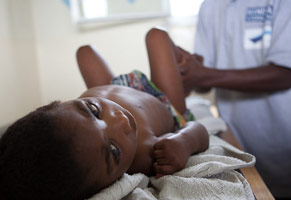
The Pool region has experienced recent conflict and is especially affected by health challenges, with over 15% of children there suffering from acute malnutrition (New Humanitarian, 2018), and between 17.3 and 20.4% of internally displaced children under five who fled from Pool suffering from acute malnutrition (Amnesty International, 2019). Tuberculosis and malaria are dangerous illnesses that affect a small portion of children living in Congo.
Right to education
The Constitution of Congo’s article 19 ensures the right to education, equal access to education and training, and compulsory universal education until the age of 16 (Congolese Constitution, 2015). The Congolese Observatory for Human Rights (OCDH) has, however, stated that “thousands of children are unable to benefit from this law”. Importantly, public education is free. Due to a lack of state funding, though, some schools are pushed to impose fees, and families are required to pay for books, uniforms, and health insurance.
There exist significant barriers to education for indigenous children who cannot attend school because they do not have birth certificates or could not afford the 1,200 West African Franc (CFA) per month insurance fee (US State Department, 2018). There are also problems with the level of quality of public education since Congolese public schools can be under resourced and there are disparities between the cities and the countryside.
The OCHD has highlighted these problems with the example of a school in Ngonaka, Lékoumou, which has about 296 pupils for every 3 teachers (two of which are temps). Due to a lack of public funding, the school imposed a fee of 5000 CFA per year per child, limiting access for many children. The water fountain at Ngonaka school has been broken for two years so children cannot drink water when they are at school. Due to the distance from schools, some children do not go to school because their parents do not have the means. This means that compulsory education for all children up to the age of 16 cannot be guaranteed (OCHD, 2019).
Congo does, however, have extremely high school enrolment rates with close to 100% of children attending primary school, over 90% of children completing primary school and negligible gender disparities in this regard. Secondary school enrolment rates are much lower since compulsory education ends at 16 years old. It follows that literacy rates are relatively high with 89% amongst men and 84% amongst women (Conseil de Droits de l’Homme, 2018).
Right to identity
Congolese children acquire citizenship from their parents. Birth within the territory of the country does not confer citizenship, although exceptions exist for children born of missing or stateless parents, or children born of foreign parents, at least one of whom was also born in the country. The government does not require registration of births; it is parents’ responsibility to request birth registration for a child (US State Department, 2018).
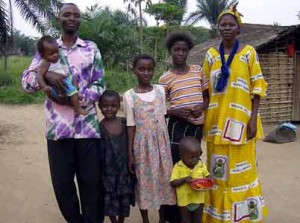
The Congolese state asserts that almost all children in the country have their births registered, at a high 96%, indicating that almost all children are able to access their right to identity in this way, by having their births registered; allowing them to exist as citizens and possess identity documentation (Conseil de Droits de l’Homme, 2018). The Committee on the Rights of Child, in spite of this, reiterated its concern in 2018 regarding “the large number of children that were still not registered, the insufficient number of civil registry offices in remote areas and the insufficient awareness of the importance of registration”.
The Committee urged Congo to establish a more efficient and accessible birth registration system to cover the whole country (Conseil de Droits de l’Homme, 2018). This is likely to be in part because the indigenous population often have trouble obtaining birth certificates which are needed for school enrolment, since the birth registration centres tend to be in cities far from their homes. Congo has a national plan for the eradication of statelessness which would protect stateless children and better help ensure their rights be fulfilled (Agence d’Information d’Afrique Centrale, 2019).
Refugee children
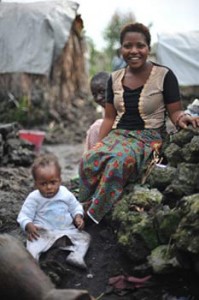
The United Nations High Commissioner for Refugees (UNHCR) works with authorities towards the improvement of the situation for refugee children, who are often of Rwandan, Beninois and Congolese (DRC) origin. It is now possible for more and more refugee children to attend Congolese schools. Children in Congo have experienced increased forced displacement, with some becoming internally displaced and others being forced to leave the country. Equally, many children migrate from neighbouring countries due to displacement.
For example, at the close of 2019, heavy rains and flooding affected over 40,000 people by the Ubangi River, damaging crops and destroying food stocks, livestock, and flooding healthcare facilities, residences, and schools in communities which already had significant humanitarian needs (US AID, 2019). On 16 December 2018, Districts of Makotipoko and Bouemba received at least 10,000 asylum seeking people who fled the DRC.
Risk factors → Country-specific challenges
Indigenous children’s rights
Indigenous peoples in the Congo are nomadic or semi-nomadic rainforest-dwelling hunter-gatherers by tradition, although some of them have now become settled and are employed in agricultural work. Central African indigenous people are known collectively as ‘Pygmies’; a term that came to be pejorative, and has been reclaimed by some indigenous people (Survival International, 2020). Indigenous people are historically viewed as inferior by colonisers and by the Bantu tribes, leading to systematic discrimination and modern slavery of indigenous people who are sometimes enslaved treated as possessions (Agence France-Presse, 2011).
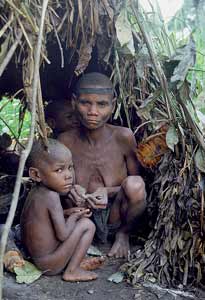
Indigenous Congolese people are ‘forest peoples’ consisting of at least eight different groups or ethnicities, and are largely distinct from the Bantu Congolese people. Over 60 languages are spoken in Congo. Indigenous people are estimated to comprise up to 10% of the population in Congo (IWGIA, 2011). The 2011 introduction of the ‘Law on the Promotion and Protection of the Right of the Indigenous Populations in the Republic of Congo’ made Congo the first African country to introduce specific legislation for the protection of indigenous people, and article 22 of a 2011 national law legislates on discrimination against indigenous people in accessing health services, although this is rarely enforced. Indigenous children are subjected to particularly significant barriers preventing them from accessing their rights.
For example, 65% of indigenous children do not have access to education, 40% are chronically malnourished and most indigenous mothers give birth without any aid from a medical professional. Since these children tend to live deep within forests, their access to culturally sensitive health and education services is severely restricted (Cultural Survival, 2018).
Indigenous children’s rights to a safe and healthy environment are under particular threat due to the climate emergency and commercial exploitation of natural spaces which reduces their access to healthy food and plants with traditional medicinal use. The indigenous children who do attend school face difficulties including linguistic barriers, discrimination, and lack of culturally relevant curricula. Many barriers to their education, then, leads to heightened illiteracy, limited employment opportunities and unfair treatment in the workplace (Cultural Survival, 2018).
Child labour
In Congo, child labor is prohibited by national law, with the minimum age set at 16. There are substantial laws and policies designed to protect children from exploitation. In spite of this, informal child labor continues to be a problem. Indigenous children and those in rural areas are particularly affected by child labour, and children as young as 6 often work long hours in the fields harvesting cassava and carrying heavy loads of firewood.
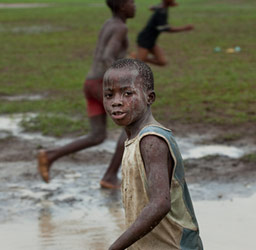
Foreign-born children are more vulnerable to child labour in Congo, and sometimes travel to Congo in order to work in housekeeping, markets, agriculture and fishing (US State Department, 2018). These children often send back their earnings to their families in their country of origin. Local NGOs have reported that victims of child labour are treated harshly, work long hours, and have almost no access to health or education services, in severe violation of their rights. Children who work in Congo often receive very little or no pay (US State Department, 2018).
There are no official government statistics on general child labor, and it seems children who work are often ‘under the radar’ or ‘off the grid’, thus increasing their vulnerability. A local authority reported that although informal child labour is illegal, it is often culturally acceptable (US State Department, 2018). There is little information available as to whether child labour is a problem in supply chains to the private sector for companies such as Coca Cola, Chevron, Apple, Microsoft and Google as well as Palm Oil producing deforestation projects all of which are present in the region and in the neighbouring DRC where it has been reported such child labour is an enormous, highly dangerous and scandalous problem.
Indeed, as the World Bank puts it, Congo: “ranks among the top 10 of Africa’s oil producers and has substantial mineral resources, the majority of which are yet untapped” (World Bank, 2019). More information is needed on child labour in supply chains to the private sector in Congo. It appears that child labour affects a large proportion of Congolese children; according to UNICEF, 23% of Congolese children were involved in child labour between 2009 – 2015 (UNICEF, 2020) and the International Labor Organization surveyed that around 85% of children in rural, indigenous regions are at work for very low wages (Cultural Survival, 2019), indicating that child labour remains a serious problem and a threat to children’s rights.
Child marriage and girls’ rights
Child marriage is illegal in Congo, with the minimum age for marriage set at 18 for women and 21 for men, and the minimum age for consensual sex being 18 years old. Child marriage is, however, legally permissible in certain circumstances: if both children’s parents, and a judge, give their permission, it is possible for children to marry with no minimum age (US State Department, 2018).
Forced marriage of children is criminally penalised in Congo with large fines and a prison sentence. Equally, violation of child protection laws which stipulate against child trafficking, child pornography, neglect of children, and child abuse can incur heavy criminal penalties (US State Department, 2018). Statistics for 2015 show that by the age of 15, 6% of children were married, and by the age of 18, 33% of children were married in Congo, suggesting that child marriage remains a serious problem in the country in spite of targeted legal mechanisms to prevent this, and child marriage is a barrier to Congolese children’s rights (UNICEF, 2020).
There are not indications to suggest that female genital mutilation (FGM) is prevalent or commonly practiced in Congo, although data on this is largely absent. Violence against women, unfortunately, is said to be an ‘invisible’ part of Congo’s ongoing Pool-centred conflict and humanitarian crisis (New Humanitarian, 2018).
Written by Josie Thum
Last updated on 8 May 2020
References:
AMNESTY INTERNATIONAL (2018) Congo 2017/2018.
OHCHR (2020) ‘Congo’ in OHCHR Online.
UNICEF (2020) ‘Republic of Congo’ in Humanitarian Action for Children.
UNICEF (2020) ‘Statistics’ in Congo at a glance.
GARDA (2017) ‘Humanitarian crisis declared in Pool department’ in News Alerts.
US AID (2019) Republic of Congo.
KLEINFELD, PHILIP (2018) ‘UPDATED: Congo-Brazzaville’s Hidden War’ in The New Humanitarian.
Africa.com (2019) ‘All about Congo Brazzaville’ in Countries.
WHO (2020) Congo in WHO Online.
US STATE DEPARTMENT (2018) 2018 Country Reports on Human Rights Practices: Republic of the Congo.
WORLD BANK (2019) ‘Overview’, The Republic of Congo.
Congo (Republic of the)’s Constitution of 2015 (2015).
UNHCR (2019) August 2019 Fact Sheet Republic of Congo.
IWGIA (2011) ‘Republic of Congo’ in IWGIA Online.
Survival International (2020) ‘The Pygmies’ in Survival Online.
Reuters (2017) Congo Republic signs peace accord with “Ninja” rebels.
[1] This article by no means purports to give a full or representative account of children’s rights in Congo; indeed, one of the many challenges is the scant updated information on Congolese children, some of which is unreliable, outdated or not representative. This is partly due to Congo being ‘inaccessible’, often overlooked and also overshadowed by its much larger neighbour, the Democratic Republic of Congo (DRC).

